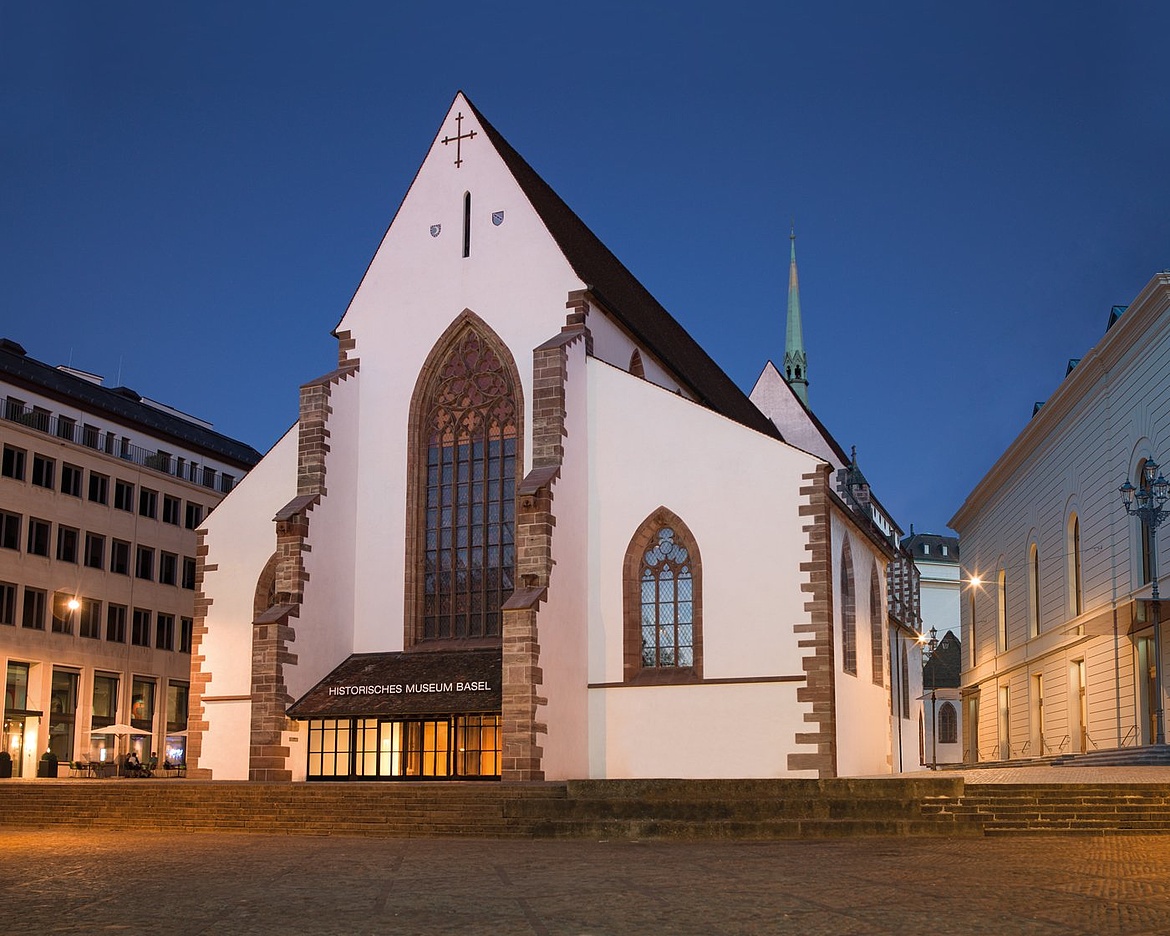
At the beginning of November 2023, the general inventory team reaches the halfway point: 166,000 physical objects have so far been newly recorded in six depots by 15 employees.
The first provenance research project at the Basel Historical Museum begins in July. The musical instrument collection will be analysed. The aim is to research the provenance of the objects in Switzerland's largest collection of European music history and to check for suspected cases of unlawful confiscation. The project is funded by the Bundesamt für Kultur (BAK).
Marc Zehntner will be definitively appointed Director of the Basel Historical Museum in June. Beat Jans, President of the cantonal government, has approved the unanimous proposal of the museum commission.
The measures in connection with the Covid-19 pandemic are lifted and a return to normality takes place.
In February 2022, the "Comites Latentes", a prestigious collection of predominantly medieval manuscripts, is handed over to the Basel Historical Museum as a deposit.
Due to the pandemic, the three exhibition houses are closed from January to early March. Nevertheless, more than 250 school classes visit the exhibition Borderlines – Basel 1933-1945. The Music Museum shows the exhibition tierisch! which was created in cooperation with three other houses. The first Theaterplatz Festival is held in cooperation with numerous partners.
The start of the large-scale project General Inventory takes place. The planning basis is established and the project management is hired.
The year 2020 was marked by the Covid 19 pandemic and caused planning uncertainties, cancellations or postponements of events, but enabled a digitalisation push.
Marc Zehntner, formerly Co-Director Vitra Design Museum, took over as director in October 2020.
The Basel Historical Museums celebrates its 125th anniversary and presents the new exhibition «Leaps in Time – A Brief History of Basel». From the Neanderthals to the pharmaceutical industry: 50 objects and 100 historical milestones guide visitors through 100,000 years of Basel's history. Six film spots deal with recent history, and an interactive installation combines facts and images on the development of the city up to the present day.
The new presentation of medieval art at Basel Historical Museums offers fascinating glimpses of the Christian faith at a time when it was omnipresent. The choice works of art from the 11th to 16th century installed in the choir of the Barfüsserkirche unfold a remarkable beauty and spiritual potency.
Reintroduction of the old names of the three exhibition sites of Basel Historical Museum:
The Pauls-Eisenbeiss-Stiftung’s world-class porcelain collection returns to Basel thanks to the changed conditions at Basel Historical Museum.
Dr. Marc Fehlmann, formerly German Historical Museum, takes over as director on 1 June 2017.
The collection of coaches and sleighs belonging to the Basel Historical Museum is to leave its current location in the Merian Gardens as per 31 January 2017. The Christoph Merian Stiftung (CMS) plans to remodel the premises in Brüglingen and hence will be in need of the barn in which the Museum of Horsepower has been housed since 1981. Thanks to its partnership with the Google Cultural Institute, both the museum itself and its collection will be accessible online from October 2016. The Museum of Horsepower will thus become the Basel Historical Museums first virtual museum.
The Pauls-Eisenbeiss-Foundation’s porcelain collection moves from the Museum of Domestic Culture in Basel to the Schloss Friedenstein in Gotha.
Director Marie-Paule Jungblut leaves the Basel Historical Museum.
Renovation of the Museum für Wohnkultur (Museum of Domestic Culture) entailing work on the façade as well as the installation of a disabled toilet and a new room for exhibitions and lectures on the ground floor.
Renaming of the four exhibition sites under the umbrella of the HMB – Basel Historical Museum:
Burkhard von Roda resigns as director of the Basel Historical Museum. Marie-Paule Jungblut, formerly of the Musée d’Histoire de la Ville Luxembourg, takes over as director in August 2012.
Transfer of 42,214 object units to the Archäologische Bodenforschung Basel.
Opening of the new permanent exhibition in the basement of the Barfüsser Church.
Barfüsser Church: Renewal of the permanent exhibition
Barfüsser Church: Renewal of the permanent exhibition, Western gallery: Basel’ Guilds and Societies
Barfüsser Church: Structural measures to save the building envelope (windows) and to improve facilities in the interior (stairs, lift). Opening of the nave and installation of a visitor service center with a café in the exhibition area.
Barfüsser Church: First phase of the renewal of the permanent exhibition (Basel Cathedral Treasure, ecclesiastical stained glass, Basel Dance of Death). Closure of Town History I (archeology) in favor of a new showroom for special exhibitions.
Collection of musical instruments. Closure of the museum in Leonhard Street and opening of the new Musikmuseum in the cell wing of the former remand prison in the Lohnhof. The construction and equipping of the museum was completely funded by private donations.
Major addition to the collection by the Jenny Adèle Burckhardt-Foundation comprising about 400 family-owned objects from Basel from the 17th–19th centuries.
Extension of the administration building Steinenberg 4.
Reorganization of the museum depot.
Major additions to the collection due to the dispersal of the Basel Trade Museum’s collection. Transfer of ca. 20,000 objects to Basel Historical Museum until 1994.
Haus zum kleinen Kirschgarten is opened with ten new showrooms in order to be part of the permanent exhibition: clock collections of Carl and Lini Nathan-Rupp (242 clocks) and the Dr. Eugen Gschwind-Foundation (208 clocks), living rooms of the 19th and 20th century.
Reinstallation of the historical musical instruments collection after the renovation of the building
Opening of the carriage and sleigh collection in Brüglingen, renamed «Carriage Museum» in 2000.
Reopening of the renovated Barfüsserkirche. Structural alterations: replacement of the central nave’s pillars, correction of the western façade, reconstruction of the rood screen, which had broken off in 1843, demolition of the aisle galleries, conversion of a basement into a room for exhibitions and operational facilities.
Taking possession of the Dr. Edith Stocker-Nolte-Foundation (19th/ 20th century residential building and interiors).
Opening of the Pauls-Eisenbeiss-Foundation’s porcelain collection (about 750 porcelain figures as well as dishes from the manufactures of Meissen, Frankenthal, Hoechst and Ludwigsburg) in Haus zum Kirschgarten.
The baroque garden pavilion of Haus zum Hof, St. Albanvorstadt 36, is reconstructed in the garden of Haus zum Kirschgarten in order to use it for the permanent exhibition.
Transfer of parts of the antiques collection of Basel Historical Museum to the just founded Museum of Antiques. Transfer of the archeological finds of Augst to the Roman Museum in Augst (except for coins and cameos).
After being relocated to Leonhardstrasse 8, the collection of historical musical instruments is opened, following the donation of the Lobeck Collection by Dr. h.c. Paul Sacher (1956).
Conversion of one half of the Choir basement of the Barfüsser Church into the lower treasury.
Closure of the Barfüsser Church; renovation of the floor; new installation of the collections (due to the prior interior redesign of Haus zum Kirschgarten).
Opening of Haus zum Kirschgarten as a museum of home décor of 18th century Basel. At the same time, installation of the following special collections: Greek and Roman antiques, ceramics, sleighs, clocks, toys.
Opening of the musical instruments collection in Haus Leonhardskirchplatz 5 (in the musicology department of the university).
Opening of the Town and Cathedral Museum at Kleines Klingental with collection holdings of the Basel Historical Museum and the Reformed Church of Basel-Stadt.
Demolition of the Segerhof. Haus zum Kirschgarten is assigned as a replacement building (opening not until 1951).
The museum inherits the Segerhof and its interiors from Miss Marie Burckhardt. The building, which had been constructed as a merchants residence in 1788–1791, was opened as the first historical house museum.
A part of the Steinenberg 4/6 building, which had been erected as a schoolhouse in 1822, is allocated to the Historical Museum in order to house the administration, workshops and depots.
Projected museum expansion at the Steinenberg (not realized).
On April 21st the Historical Museum (since 1916 Basel Historical Museum) is opened in the extensively and structurally renovated Barfüsserkirche.
Merging of the Medieval Collection, the Antiques Collection (without ethnographical objects) and the holdings of the Basel Arsenal in the new «Historical Museum».
The institution, which is the biggest and most important of its kind in Switzerland, features two salaried posts for one conservator and one janitor.
Basel applies to be the seat of the projected Swiss National Museum. The Medieval Collection was to be the basis and the Barfüsser Church was to provide the location.
Foundation of the «Verein für die Mittelalterliche Sammlung und für Erhaltung baslerischer Altertümer» (since 1892 «Verein für das Historische Museum»).
Wilhelm Wackernagel arranges the division of the collection by founding the Medieval Collection, which is the predecessor institution of the Basel Historical Museum. It is housed in outbuildings of Basel Cathedral, in the «Bischofshof».
Opening of the «Museum an der Augustinergasse», as the first new museum building in Basel combining all collections (library, art collection, antiques and coin collection, natural historical collection). The building had been designed by architect Melchior Berri.
Major additions to the collection due to acquired holdings of the Museum Faesch, which had been collected in the 17th century.
As one of the first public collections of an urban community, the Amerbach Cabinet is made open to the public in the «Haus zur Mücke».
The Council of Basel decides to purchase the Amberbach collections for the university.
Basilius Amerbach (1533–1591) draws up Inventory D of the Amerbach Cabinet, listing the holdings according to their mode of storage in the private collection building «Zum Kaiserstuhl». The building had been constructed in 1580.
Bonifacius Amerbach (1495–1562) inherits the estate of Erasmus of Rotterdam, which, together with the heir’s coin collection and the paintings of Holbein, becomes the basis of the Amerbach Cabinet.

The Franciscans, often called the Barfüsser or «barefooted ones», settled in Basel in 1231. In 1250 the Bishop of Basel ...
The Haus zum Kirschgarten, built between 1775 and 1780, marks a high-
light of the secular architecture of the Louis Seize period on the Upper Rhine ...
The Music Museum is located in the centre of Basel's Old Town above Barfüsserplatz. It belongs to a complex of buildings whose oldest ...

Basel Historical Museum
Management & administration
Steinenberg 4
PO box
CH – 4001 Basel
Reception: +41 61 205 86 00
historisches.museum(at)bs.ch